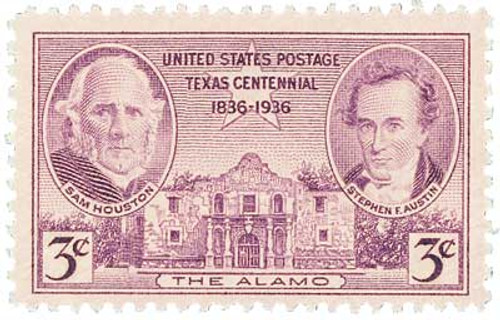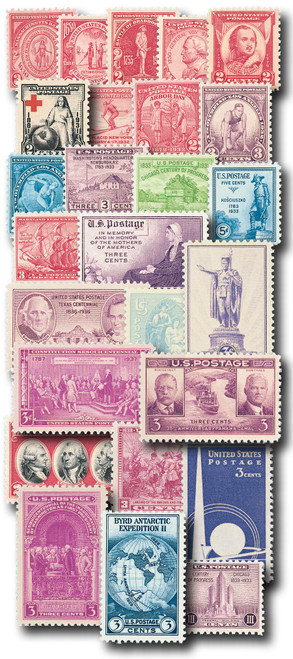
1936 3c Texas Centennial
# 776 - 1936 3c Texas Centennial
$0.35 - $30.00
U.S. #776
1936 3¢ Texas Centennial
1936 3¢ Texas Centennial
Issue Date: March 2, 1936
First City: Gonzales, TX
Quantity Issued: 124,324,500
Nicknamed the "Lone Star State," Texas is the second-largest state in the Union. Settled by the Spanish in the late 1600s, Texas won its independence in 1836. In 1845, Texas became the 28th state to join the Union.
U.S. #776
1936 3¢ Texas Centennial
1936 3¢ Texas Centennial
Issue Date: March 2, 1936
First City: Gonzales, TX
Quantity Issued: 124,324,500
Nicknamed the "Lone Star State," Texas is the second-largest state in the Union. Settled by the Spanish in the late 1600s, Texas won its independence in 1836. In 1845, Texas became the 28th state to join the Union.












